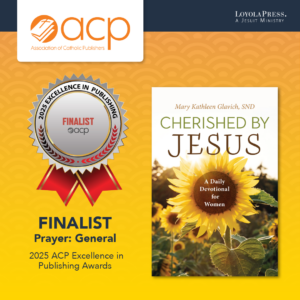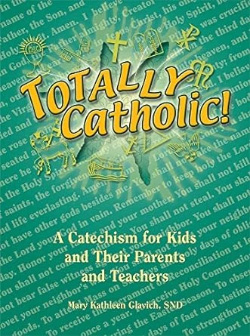
Today I finished writing a book about God’s love for us and our love for God and sent it off to a publisher. In the process I learned a few things. Because we are in the month of June, which is dedicated to the Sacred Heart, let’s focus on the love of Jesus for us. I came across the notion that one reason that God became human was so that he could love us with a human heart. Now the heart stands for our whole being. It is a synecdoche, a figure of speech in which some part represents the whole. For example, when we give someone “a hand,” we are giving them more than that. To say that Jesus loves us with all his heart, means with his whole self. However, his heart is also related to his great act of love, when he “loved us to death” on Calvary. For after Jesus died, a soldier cast a lance into his side and blood and water flowed out. That is why in images of the Sacred Heart, the heart is pierced.
Devotion to the Sacred Heart originated long before Jesus appeared to St. Margaret Mary and asked her to promote it. But in the seventeenth century, he called the world’s attention to his immense love for us. In a vision to the saint, he showed her his heart, affirmed his love for everyone, and lamented that he was loved so little in return. This visit resulted in all the practices of devotion to the Sacred Heart that we know today, such as First Fridays.
In the last century, Jesus again reached out to confirm his love for us and showed himself to St. Faustina Kowalska. Very seldom in the past two thousand years did Jesus himself ever appear, yet he came to two woman primarily to call is to love. In St. Faustina’s case, he inaugurated the Divine Mercy devotion, which is related to his sacred heart. In a vision the sister saw Jesus with a red ray and a white ray emanating from his heart. He explained that the rays represented the blood and water that flowed from his pierced heart. Jesus instructed St. Faustina to have this vision painted. When she first saw his image painted under her directions, she wept in disappointment and said to Jesus, “Who will paint you as beautiful as you are?”
Obviously, God is longing for our love in return for his. We were made to live happily ever after with the Trinity, the God who is best defined as Love.
June, a popular month for weddings (when there are no viruses), is a good time to stoke the embers of our love for Jesus. As St. Augustine said, “To fall in love with God is the greatest romance; to seek him, the greatest adventure, to find him, the greatest human achievement.”
Interestingly, someone compared the 52 weeks of the year to a deck of cards. On the Sunday of the last week we celebrate the solemnity of Christ the King. He is the King of hearts. Not king of clubs, a symbol of violence; not king of spades, which can be used to throw dirt on others or bury a past; and not diamonds, which stand for wealth, greed, and attachment to possessions.
• What do the devotions to the Sacred Heart and to the Divine Mercy mean to you?









